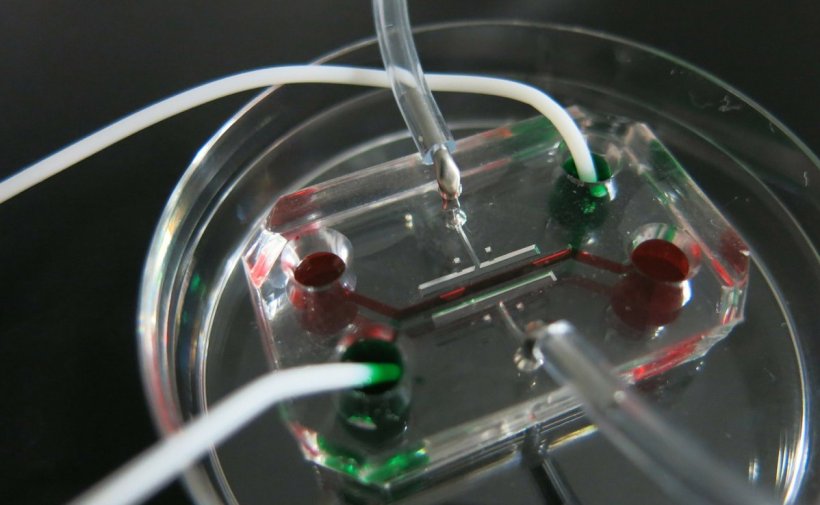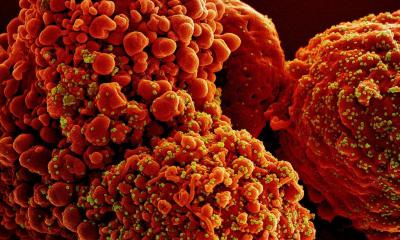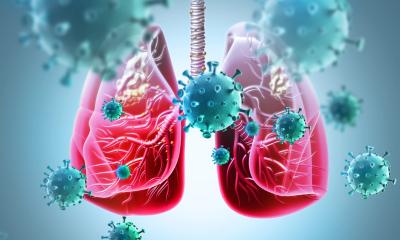
Image source: Kyoto University
News • Coronavirus mechanism discovered
Organ-on-a-chip reveals how SARS-CoV-2 invades blood vessels
A research group led by CiRA Junior Associate Professor Kazuo Takayama and Associate Professor Yoshiaki Okada of Osaka University has revealed that SARS-CoV-2 disrupts the vascular endothelial barrier by suppressing the expression of Claudin-5 (CLDN5) to invade the blood vessels.
SARS-CoV-2 infects respiratory epithelial cells and then spreads to other organs via blood vessels. In this case, SARS-CoV-2 crosses the walls of blood vessels (the barrier of vascular endothelial cells) from respiratory organs and enters the blood vessels. However, the mechanism was unknown. The research group created an airway-on-a-chip that mimics respiratory organs consisting of airway epithelial cells and vascular endothelial cells. Using the device, they found that SARS-CoV-2 disrupts the vascular endothelial barrier by suppressing the expression of CLDN5, a protein involved in adhesive junctions between vascular endothelial cells, and by subsequently weakening the vascular endothelial cadherin-mediated junctions. The team confirmed that CLDN5 gene and protein expression levels were decreased in the lungs of a patient with Covid-19. They also demonstrated that increasing CLDN5 expression in vascular endothelial cells by gene transfer or small molecule drugs (fluvastatin) suppressed SARS-CoV-2-induced vascular endothelial barrier disruption.
The results of this study were published in Science Advances.
These results indicate that suppression of CLDN5 expression is an essential mechanism for SARS-CoV-2-induced vascular endothelial barrier disruption, which increases the severity of Covid-19. The findings also indicate that up-regulation of CLDN5 expression is a new therapeutic strategy against Covid-19.
The airway-on-a-chip technology, which can be used to reproduce the respiratory pathology of Covid-19 and search for therapeutic agents, is a promising tool for elucidating the pathogenesis of severe respiratory tract infections including Covid-19 and developing therapeutic drugs in the future.
Source: Kyoto University
29.09.2022











